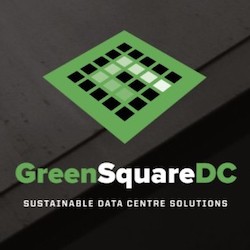I take part in many roundtables with chief sustainability officers from a variety of organizations. These are extremely smart, well-informed people who study every element in their businesses from supply chain, business partnerships, energy sources and every facet of their production for potential improvements. But while some participants are extremely motivated, seeking every possible way to help save the planet, others are just there to produce a report and try to influence change.
The leaders are those who are earnestly looking at changing the way they do business with the health of the business—and the planet—in mind. Because even though sustainability consciousness has gained a foothold in the business world, that’s not enough. As the recent COP 28 conference in Dubai emphasized, we cannot reach net zero without additional measures from the private sector.
As we said in our recent report on enterprise sustainability initiatives, it’s time to move from being “green” to “deeply green.” This requires embedding sustainability into the very DNA of the business—and having a strong conviction that sustainability can reveal new opportunities by revamping how you operate.
The business case for sustainability
In addition to the existential question of the planet’s survival, there is a powerful business case for embracing a deep green philosophy. After all, sustainability is about reducing waste and effective use of resources, and therefore, reducing costs. We’re working with a variety of businesses, including several supermarket chains that understand this; they are completely rethinking their supply chains with an eye toward reducing waste and reaping the financial and sustainability benefits.
These businesses also grasp that consumers are voting for deep green businesses with their wallets. A growing number of consumers factor in sustainability when making purchase and investment decisions. Moreover, the young workers companies will increasingly rely on are demanding their employers prioritize sustainability.
Genuine devotion to sustainability—vs. easily detectable “greenwashing” and a check-the-mentality—burnishes the brand and helps the business align with both consumers’ and employees’ values.
Business sustainability: Signs of Progress
Seven signals of a sustainable organization include:
- Commitment to achieving explicit sustainability goals at every level of the organization, with clear governance structures to ensure achievement.
- A well-crafted sustainability plan that details how these goals will be achieved.
- Ability to capture and analyze real data to determine insight and action.
- Effective use of technology to drive improvement in business processes and production.
- A sustainable supply chain, with effective focus on reducing waste.
- Ecosystem of B2B partners with aligned sustainability goals.
- Detailed plans for reducing power usage and waste and moving to smart alternatives.
Some executives still think of environmental, social and governance (ESG) initiatives as a cost center, but that’s changing. A sustainability strategy can reduce costs and raise profits substantially, all while lowering energy consumption and water use. For example, we’re working with Orica, a manufacturer of commercial explosives, to achieve real-time reporting of its greenhouse gas emissions. Orica understands that it has a sustainability responsibility—and that improved GHG reporting and forecasting will not only deliver significant environmental improvements, but it will also streamline their operations and drive out cost.
The case is clear: While going green was a necessary first step, it was only a first step. Beginning today, further strides are needed to reverse damage and rebuild a healthier planet.
Getting there from here
What does it mean to go deep green?
It starts by focusing less on the zero-sum approach that has long characterized business endeavors and realizing what’s really at stake. The only real winner—or loser—will be humanity as a whole.
All this must lead to action and commitment of time, talent and treasure. Here are some changes, including some that may be uncomfortable, for leaders to consider:
- The C-suite must clearly signal that sustainability is a top priority. Hiring a chief sustainability officer is a key step. Suppliers, transport, operations, marketing and IT must all be examined with a focus on sustainability measures. Goals, progress and even setbacks should be communicated throughout the organization.
- Financial investment is necessary. Businesses genuinely committed to sustainability will sometimes need to de-prioritize cost savings in favor of boosting sustainability. The supply chain, skills provision, operations and site selection will all be affected. Stakeholders may raise reasonable questions about trading potential profit for ESG advances; leaders must address these questions by reiterating the organization’s priorities.
- “S” and “G” cannot be neglected. Social and governance issues are critical components of a deep green philosophy. Enterprises must stop viewing dollars spent on equity and inclusion as dollars that could have gone to “real” business initiatives. And compliance, ethics and transparency cannot be viewed as impediments to productivity; in fact, they are crucial enablers of productivity. Only by embracing these realities can organizations create the sense of purpose and unity needed to be deep green.
The role of technology
Technology—notably artificial intelligence and generative AI—are essential to realizing sustainability goals. AI’s ability to quickly process vast quantities of data is a game-changer; as the technology continues to develop, it will, with responsible stewardship, allow us to consider almost limitless data points to improve our decision-making. AI will allow enterprises to analyze not just every aspect of the business, but also the interplay and trade-offs among those aspects—to an extent never before possible.
Whether for emissions reporting and monitoring, or reducing energy consumption and emissions, gen AI has great potential for changing how we approach sustainability. It is in our collective hands to shape this technology into a tool for progress, using it responsibly to spur environmental innovation, unlock new possibilities and improve the planet.
At the same time, AI requires enormous amounts of computing power, which is already a problem (by some estimates, the data center industry accounts for up to 3% of global greenhouse gas emissions). It is ironic that among the myriad trade-offs to be tackled by AI is this one: At what point does AI create more environmental downside than it repairs?
Toward a deep green future
The issues and challenges discussed here are not simple ones. For some leaders, it may go against the grain to hear that gross profit cannot always carry the day; that working hand-in-glove with regulators and even competitors is necessary; and that short-term productivity solutions often backfire in the long run.
But forward-looking organizations—those that understand the importance of moving beyond green to deep green—will internalize these arguments and find themselves in a position of leadership.
To learn more, read our report “Deep Green: how data, technology and collaboration will drive the next phase of sustainability.”
Author Jane Livesey is head of Asia Paicfic and Japan at Cognizant. More: Read more Cognizant guest blogs here.




